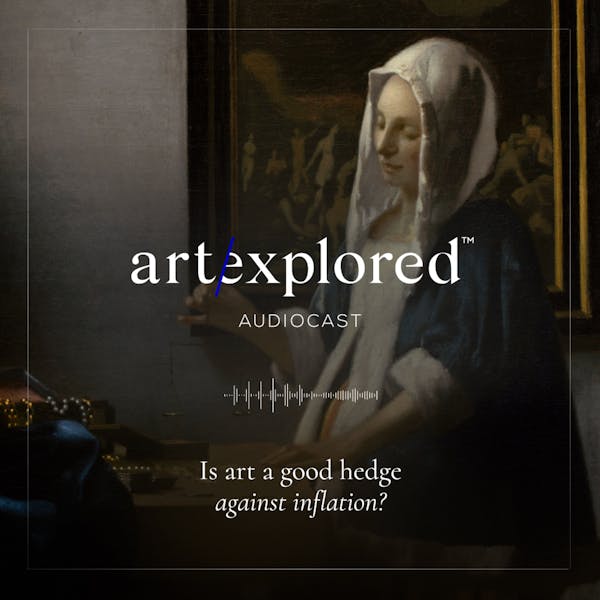island6: fueling Shanghai’s creative industry
The beating heart of China’s contemporary art scene is an island
By Kala Barba-Court
Kala Barba-Court visits the cutting-edge art collective’s HQ and talks to its chief curator about fuelling China’s creativity amid the ongoing Covid lockdowns in the country.
island6 – "liu dao" in Mandarin – is the nucleus of Shanghai’s art scene and has a reputation for producing cutting-edge tableaus where traditional artistic mediums meet modern technology. What started as a Shanghai-based artist residency programme has gradually evolved into a dynamic art collective creating sensorial and engaging projects. We talk to island6's in-house curator Camilla Zhao about the importance of collaboration, productivity during the pandemic, and the future of contemporary art in Shanghai.
I make my way to the island6 art centre on a beautiful autumn day. Pre-Covid, the M50 Art District – a complex of dilapidated warehouses converted into galleries, studios, and art spaces – would have been teeming with curious locals, tourists, and artists. These days there's a significant drop in foot traffic in the area. Inside the centre, though, the mood is significantly lighter. The space is alive with sound and movement, elements that define island6's vision and aesthetic.
A canvas depicts a typical Shanghai street scene: men on rickety motor-powered carts; a smattering of commuters at a bus stop; the ubiquitous foldable lawn chair on the sidewalk, temporarily empty – a symbol of the Chinese's penchant for people-watching. Quite extraordinarily, the bus stop's tiny billboards play looped adverts, taking the re-created scenography of Shiquan Street to the next level.


This new-media artwork is part of the gallery's latest show Welcome to the Neighborhood, built around the theme of classic, colourful Shanghai street scenes that discreetly hint at the many stories brewing behind closed curtains. "During Covid, many residents spent a lot of time inside their homes and neighbourhoods," says Zhao. "This fostered a sense of community and closeness, and we wanted to play with this idea of untold narratives happening inside homes all over the city." Visually engaging and thought-provoking, this single artwork embodies the collective's objective: to bring individuals from various creative fields together to produce innovative, complex, and imaginative art.
In 2006, French curator and artist Thomas Chavériat founded island6 in a rehabilitated flour mill warehouse on Moganshan Road, relocating two years later to the M50 Art District. From its inception, the collective grew from a group of six to 26 artists, curators, and technicians. At the heart of their operation: artistic collaboration. Guest directors, performers, and curators are often invited for their outsider's opinions and perspectives on individual pieces or special exhibitions, prompting an international and cross-cultural exchange.
So how exactly do the fairly technical artworks of island6 come to fruition? Zhao explains the creative process of the piece Sway Away, which shows a digitally animated girl on a swing held up by a giant hand: "After weeks of brainstorming, researching and planning, we started by photographing a model's hand, which was used as a reference by our artist as he put it down on canvas. A production team worked in tandem, building an actual swing set in the workshop. Videographers shot a clip of our actors on the swing, and our digital artist manipulated the footage into an LED animation. Finally, the in-house technicians handled the technical aspects, building the hardware that allows the animation to loop inside the frame."
As the saying goes, it takes a village. Gaze at an island6 creation, and you're looking at the culmination of an entire team's efforts. "Everybody does what they do best, and even though each artist only makes a fragment of the piece, the art directors and curators step in to organise all the puzzle pieces together,” Zhao says.
Three years into the pandemic, China remains closed off to the rest of the world. Everyday life is still dictated by the strict protocols imposed by the government.
The pandemic dealt a blow to the Chinese art scene and industry, shutting down domestic museums and cultural institutions for almost three months. Curiously enough, the months-long lockdowns turned out to be a very productive period for the gallery. "island6's time is divided between the gallery and art production," Zhao tells us. "Closing the gallery meant allocating more time to the production process. We actually produced more art in the past two years than any time before."
The future may seem bleak, but the collective believes the art industry will continue to evolve, morph, adapt, and re-adapt. Art Basel Hong Kong, prohibited from holding the in-person event in 2020, pro-actively took the fair online; 231 top galleries participated in the virtual event. The collective has its sights set on expanding its global exposure, specifically in the Chinatowns of Southeast Asia. "We now have a new gallery in Phuket that hosts the oldest and second-largest Chinatown in Thailand," Zhao says. "We'd love to open a third gallery in Penang's Georgetown, home to the largest Chinatown in Malaysia."
Indeed, an exciting prospect that shines like a beacon of hope during these dark times. Not wanting to delve into oversaturated themes such as global warming, Covid, or war, island6 chooses to explore the unexpected, the whimsical, the humorous, and the unimaginable. "Whatever happens to Shanghai, our desire to create and share life and stories through art will always remain intact,” Zhao concludes.
Read more
Listen to audiocasts
Discover more artists







